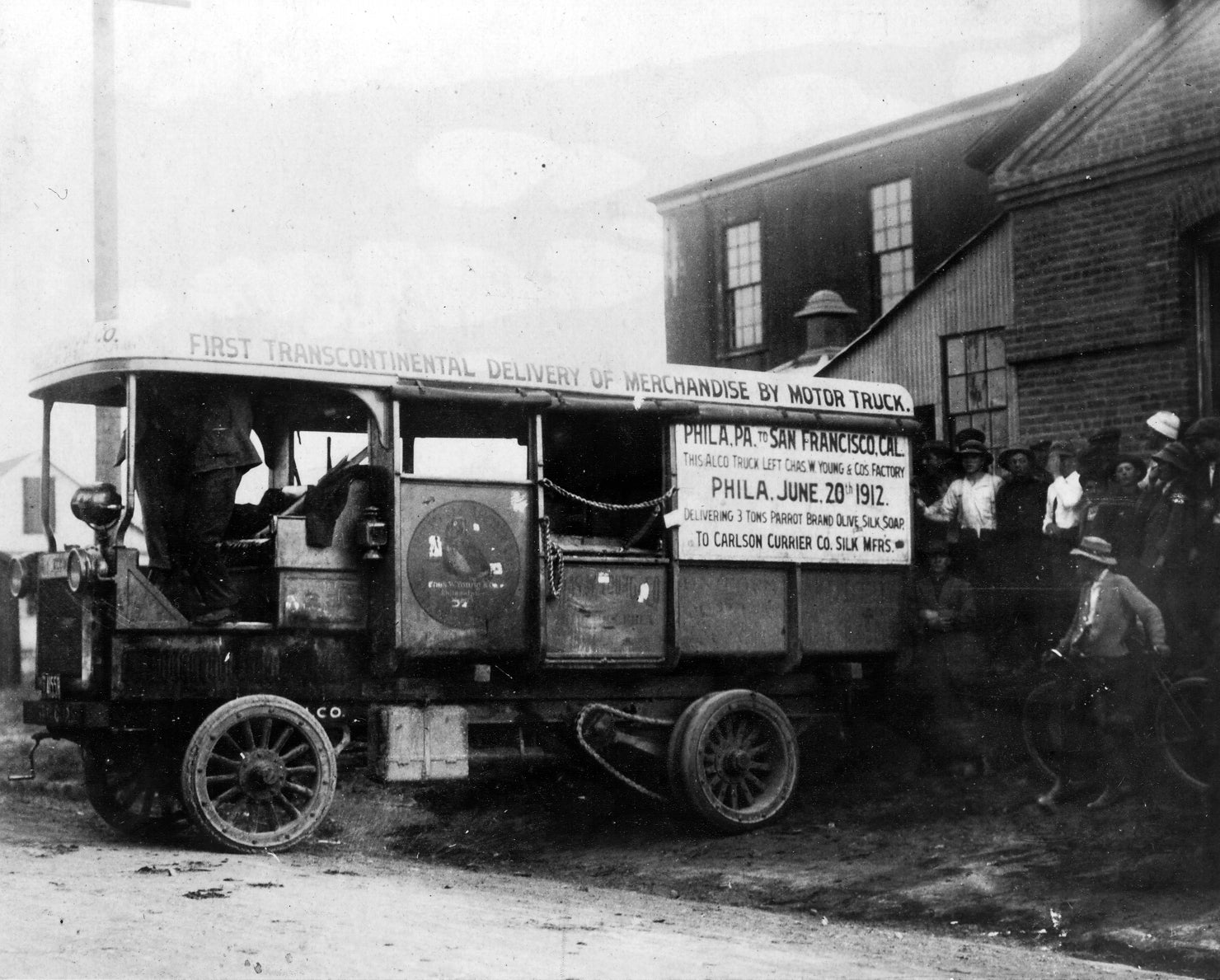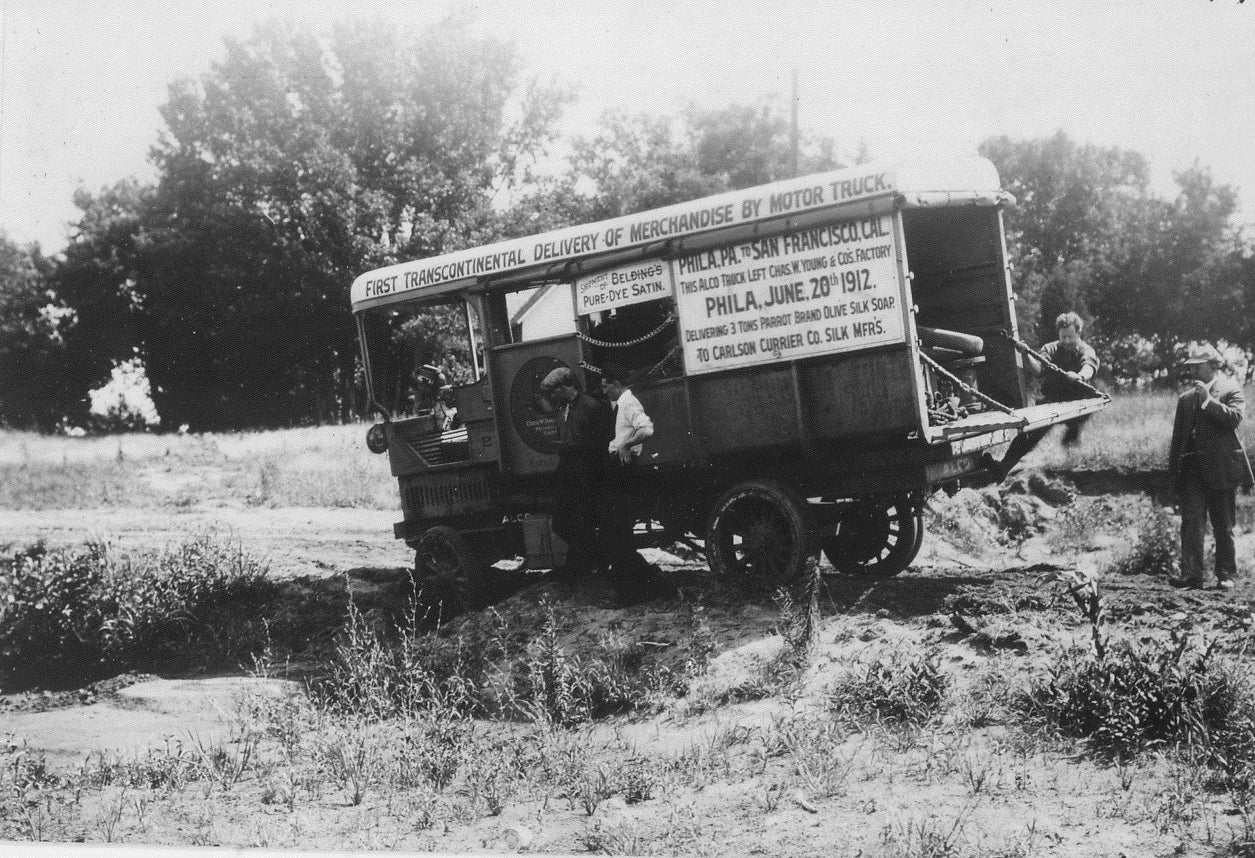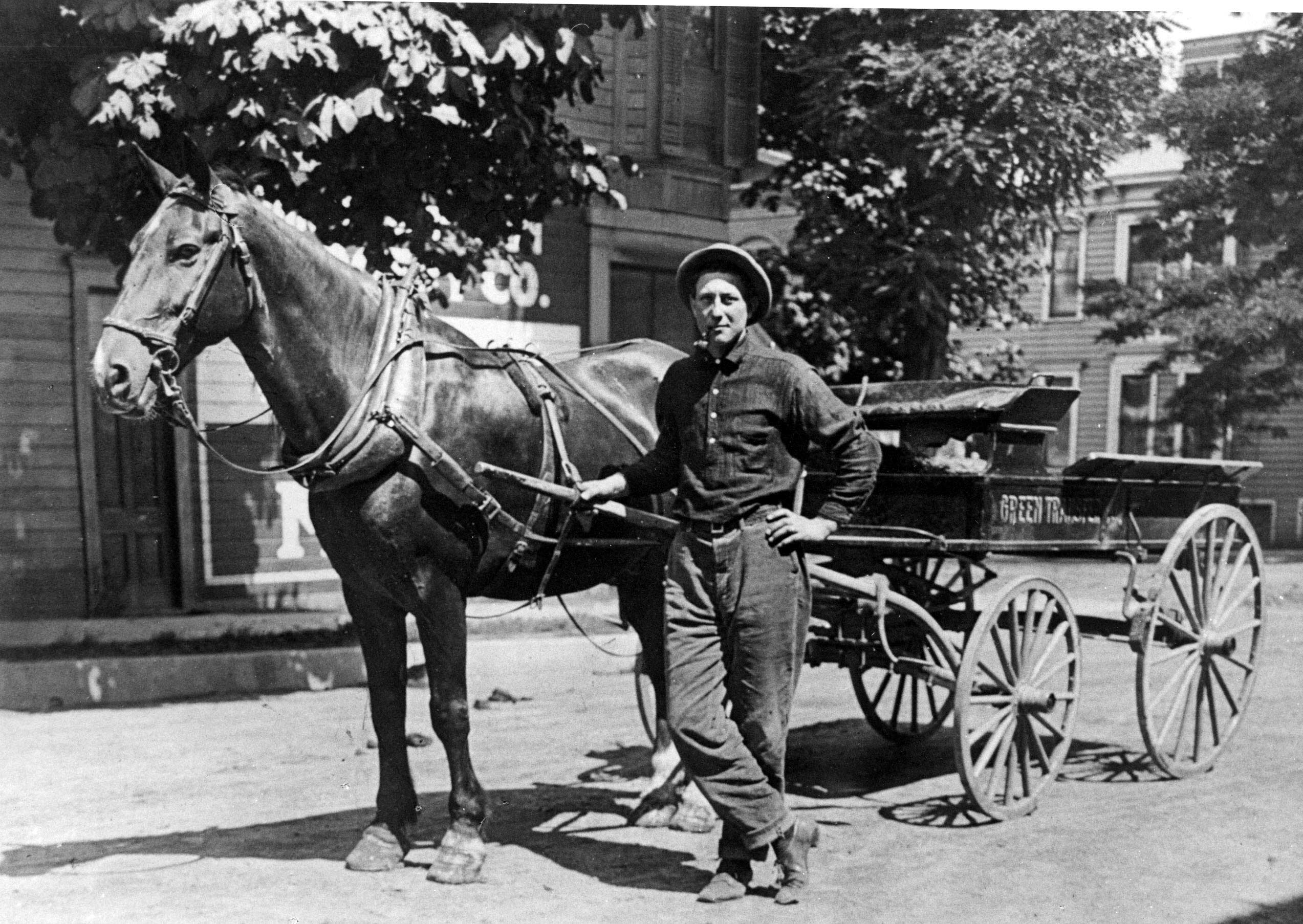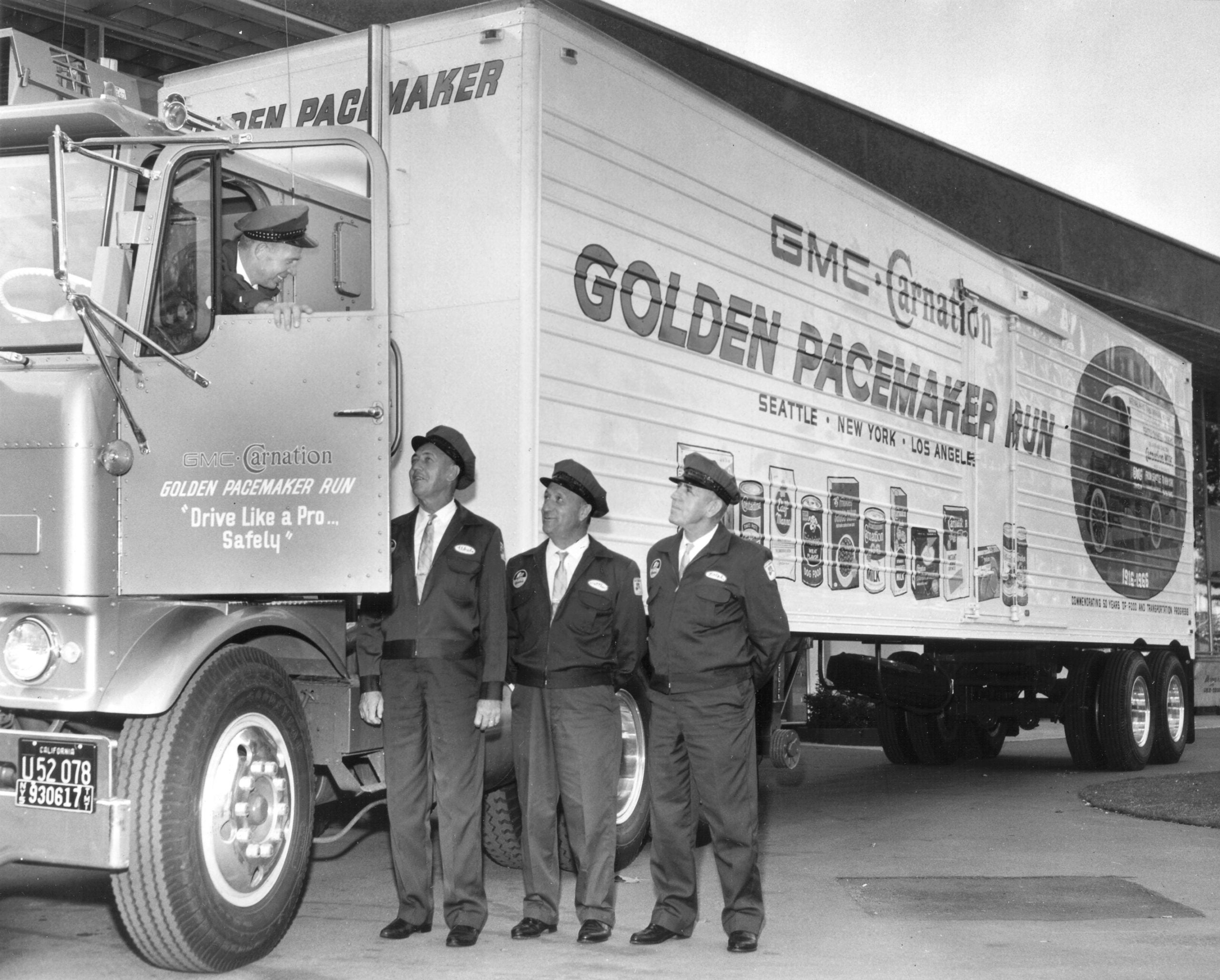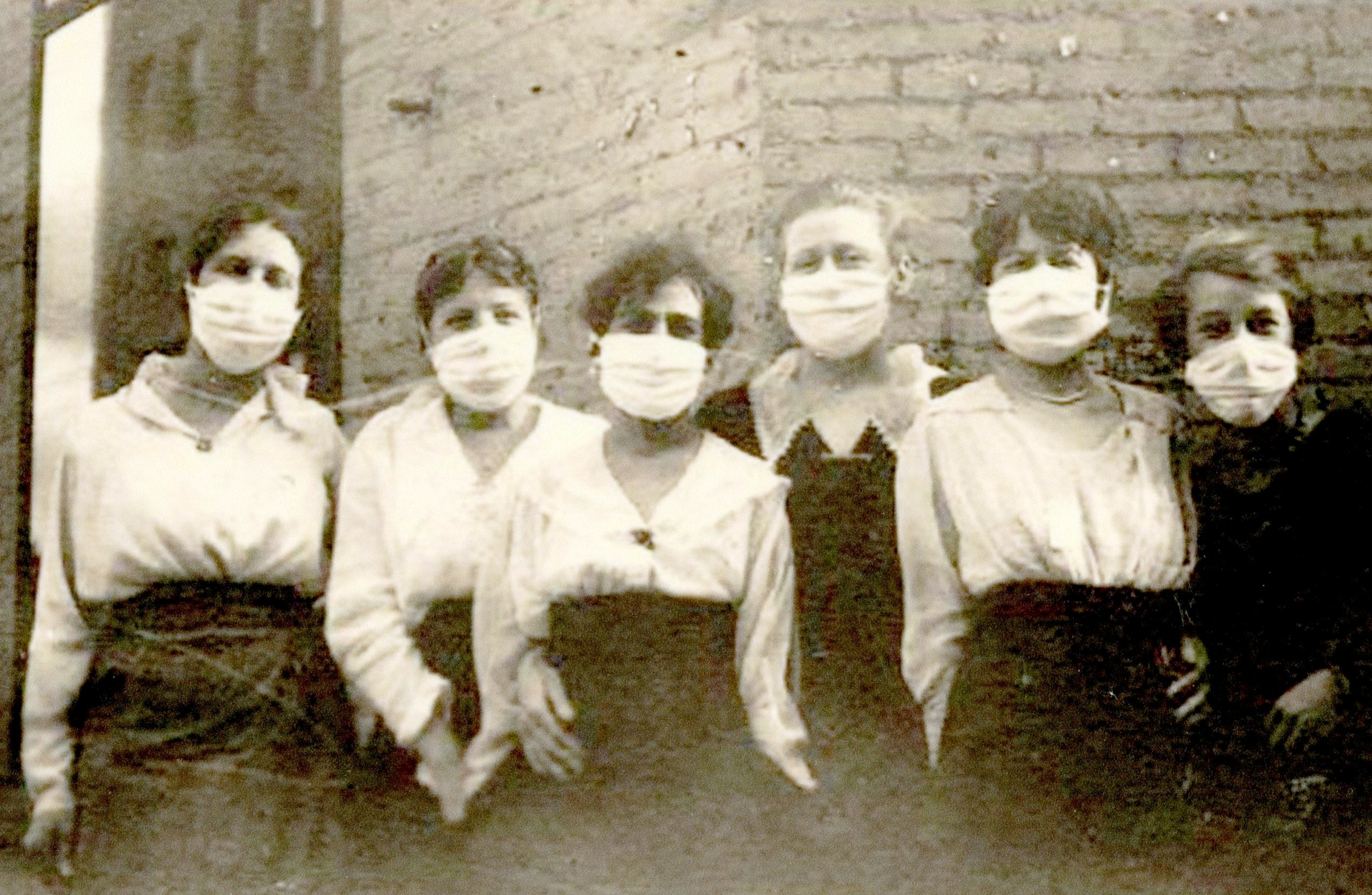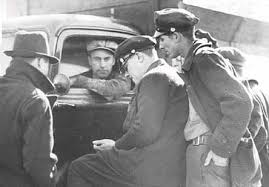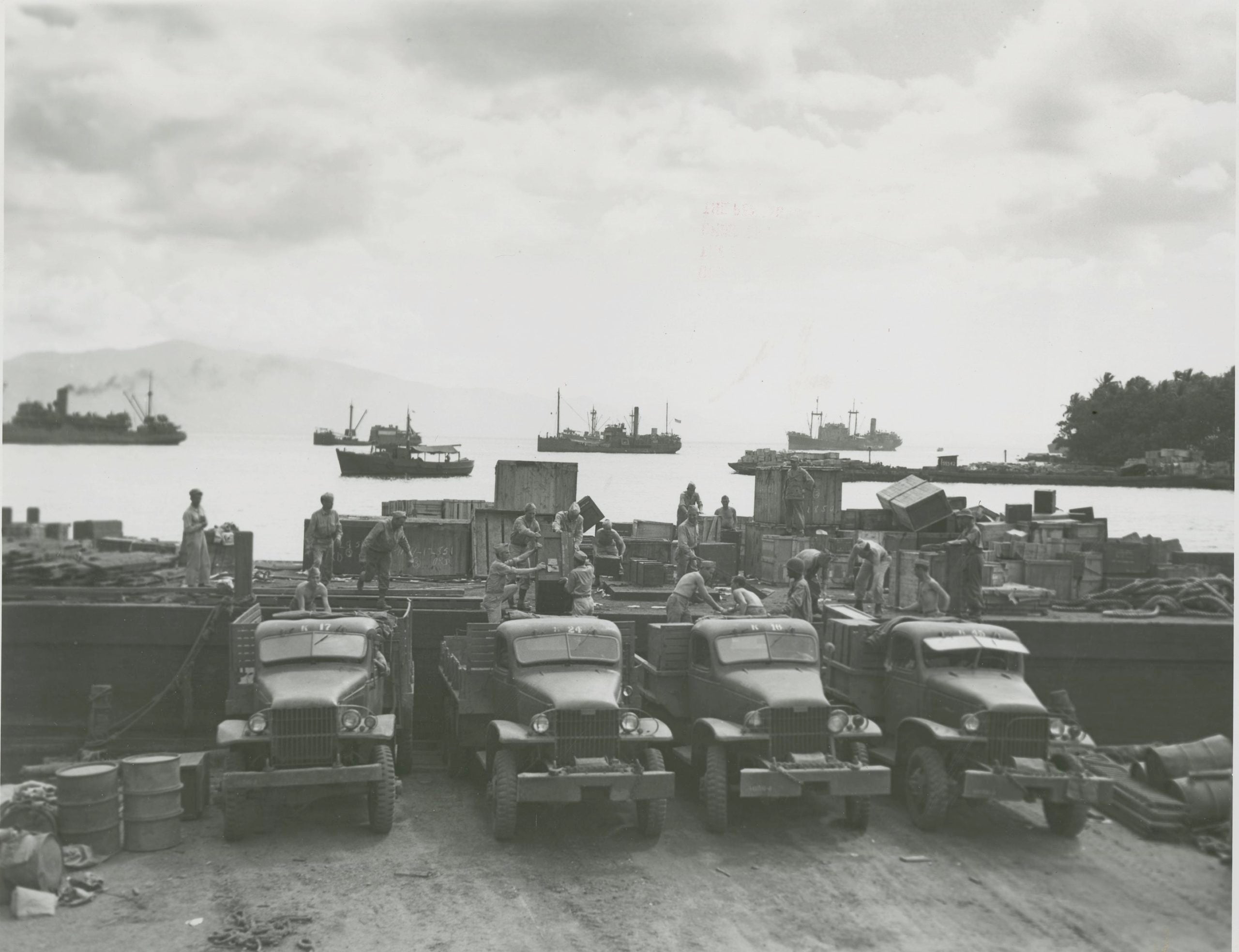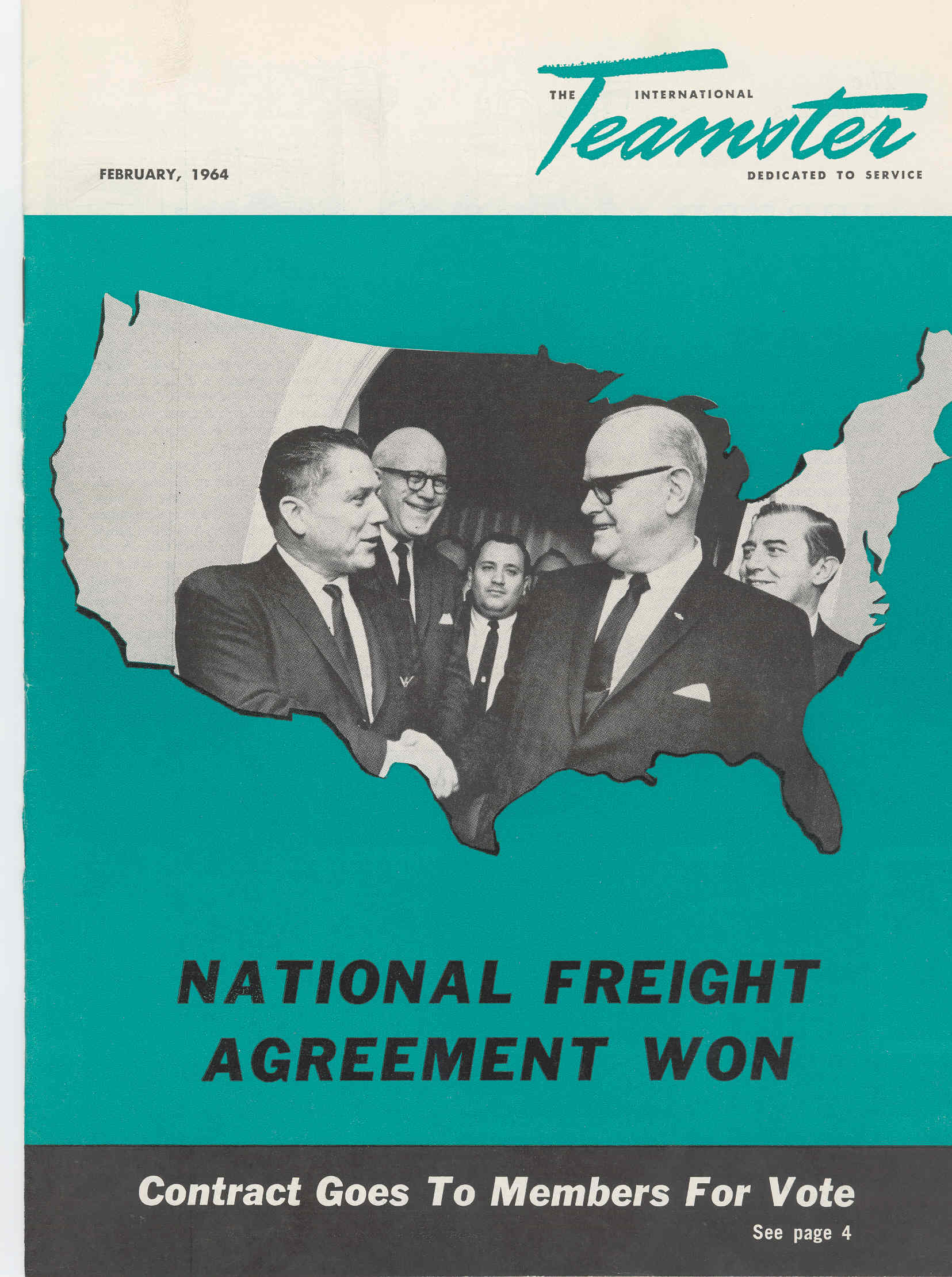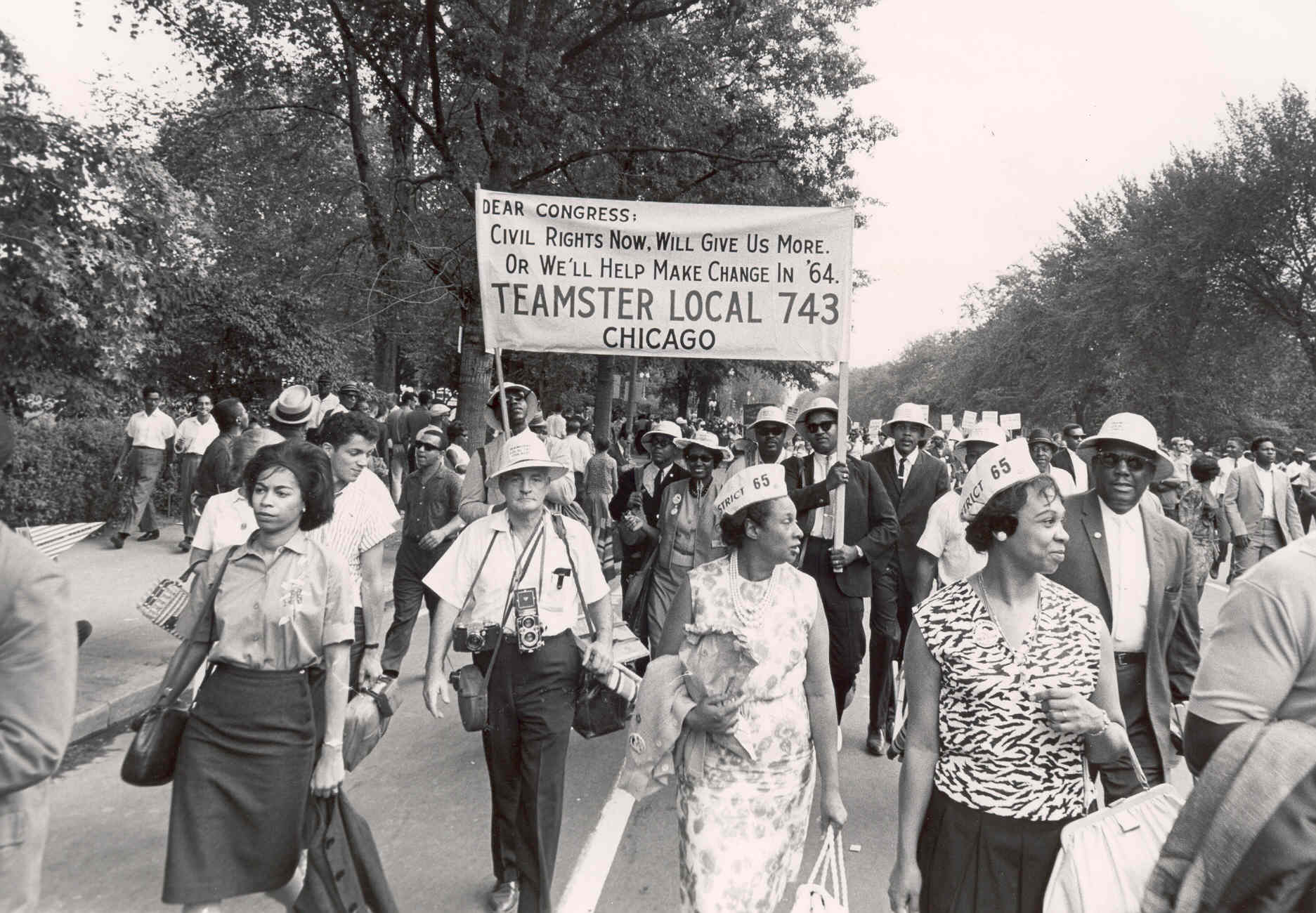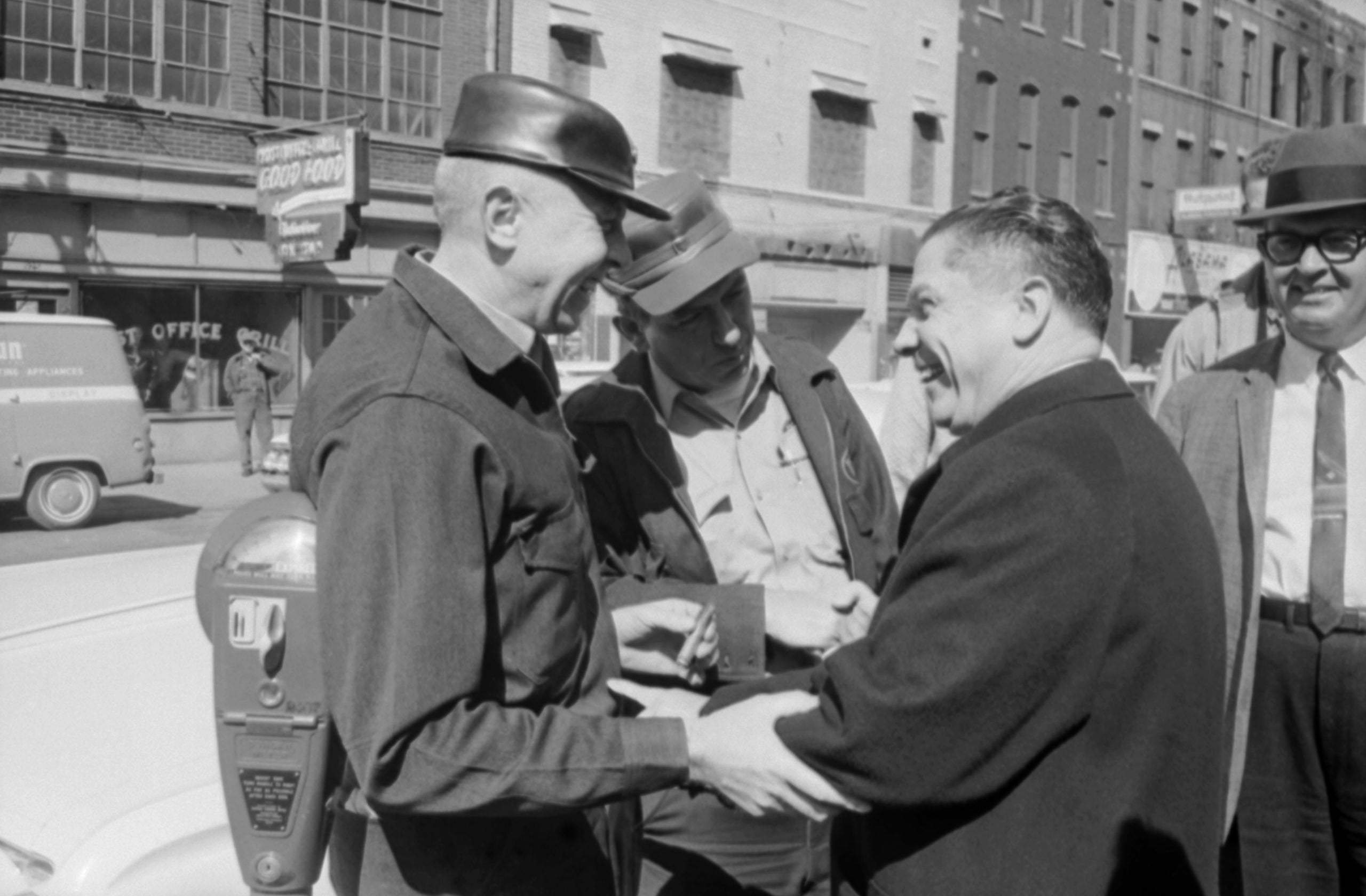Transcontinental Delivery
Teamsters were involved in the first transcontinental delivery of goods by motor truck. As a result of that event and other similar experiences, the union became a staunch advocate for improved roads and driver safety training.
Dan Tobin, the visionary General President elected in 1907, saw that technology was radically changing the freight-moving industry. Recognizing the trend of motorization as more than a passing fad, he set out to organize the fast-growing motorized truck delivery industry. He began by organizing motor truck drivers and prevailed on horse and wagon companies to train their drivers in automotive skills.
True Pioneers
In 1912, Teamsters from the Charles W. Young Company in Philadelphia drove off on a mission that would not only change the very basis of the union, but would earn a place in the industrial history of the United States.
The five-man crew of Teamsters drivers set out from Philadelphia with three tons of Parrot Brand Olive Oil Soap, and headed for Petaluma, Calif. The cross-country trip was made in 91 days, arriving at City Hall in San Francisco on September 20, 1912.
The trip was kicked off with a big truck parade and display sponsored by the Philadelphia Inquirer. The drivers were real “pioneers” as there were few roads of any consequence along the route and no conveniences or comforts.
These drivers had no Stuckey’s, no gas stations, no restrooms, no padded seats, no shocks on the truck and no real protection from the weather
They faced many hardships and breakdowns along the way, but pushed on in true Teamster fashion, proud of their skills and their new craft.
By the time they reached their destination they had captured the imagination of the country and set an historic precedent. This first transcontinental delivery by motor truck would serve as the inauguration of a new era in the transportation of merchandise.
In 1916, as motor trucks and technology improved, Teamsters once again made news by participating in a cross-country delivery for Carnation Milk. This trip from New York to Seattle took only 30 days.
Fifty years later, Teamster drivers made the same Carnation trip as part of the Golden Pacemaker Run celebration in just six days—with an additional leg to Los Angeles.
This was an exciting time—full of possibilities for the future—with one regrettable downside for Teamsters. The horses, or “teams,” that had been the faithful and trusted companion of the drivers, came to the end of their road.
An Honored Symbol
The Teamsters would show an ability to adapt to numerous changes over the coming decades, but through an almost unspoken agreement among the ranks, one thing would never change: The horse would always be a proud and lasting symbol for the members, honoring the heritage and traditions that gave rise to a great union.
As proof of their devotion to their loyal partners, even amid the many changes, Teamsters declared by proclamation at the 1916 Convention that the horse would always be the heart of the union and always remain a part of any badge, button, logo or flag.
